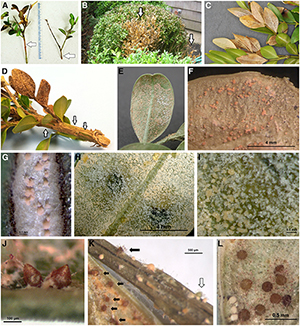For more than 150 years, Volutella blight has been one of the most common diseases of the loved and iconic boxwood plant as well as other plants in the family, including pachysandra and sarcococca. Despite its presence on every continent except Antarctica, the disease can be hard to identify.
To help with diagnosis, a group of plant pathologists based in the United States have put together a guide that provides comprehensive review of the three fungal pathogens that cause Volutella blight. Their guide includes new data on the structures and forms of the pathogens as well as a detailed comparison of the diagnostic traits of three major boxwood fungal diseases: Volutella blight, boxwood blight, and boxwood dieback.
 “This multi-institutional collaboration provides the first comprehensive review of Volutella blight and a detailed comparison of this disease with the other two major fungal diseases of boxwood,” explained Doug Luster, a plant pathologist working for the United States Department of Agriculture. “We hope first responders can use this guide to quickly and accurately diagnose Volutella blight and that it will facilitate new research to advance our understanding of this old but under-studied disease.”
“This multi-institutional collaboration provides the first comprehensive review of Volutella blight and a detailed comparison of this disease with the other two major fungal diseases of boxwood,” explained Doug Luster, a plant pathologist working for the United States Department of Agriculture. “We hope first responders can use this guide to quickly and accurately diagnose Volutella blight and that it will facilitate new research to advance our understanding of this old but under-studied disease.”
